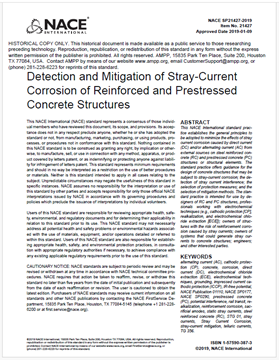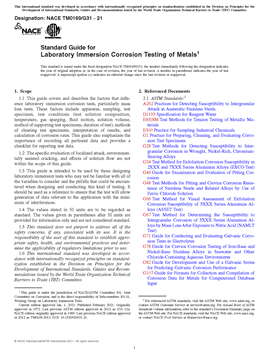Search
Products tagged with 'Downloadable'
View as
Sort by
Display
per page
NACE SP0499-2012 "Corrosion Control and Monitoring in Seawater Injection Systems"
Product Number:
21237-SG
Publication Date:
2012
$179.00
NACE SP0572-2007, Design, Installation, Operation, and Maintenance of Impressed Current Deep Anode Beds
Product Number:
21007-SG
Publication Date:
2007
$179.00
NACE SP0592-2006, Application of a Coating System to Interior Surfaces of New and Used Rail Tank Cars in Concentrated (90 to 98%) Sulfuric Acid Service
Product Number:
21057-SG
Publication Date:
2006
$179.00
NACE SP0616-2022, Standard for Hull Roughness Measurements on Ship Hulls in Dry Dock
Product Number:
NACE SP0616-2022
Publication Date:
2022
$109.00
NACE SP0716-2016, Soluble Salt Testing Frequency and Locations on Previously Coated Surfaces
Product Number:
21409-SG
Publication Date:
2016
$179.00
NACE SP21412-2016/SSPC-CPC 1, Corrosion Prevention and Control Planning
Product Number:
21412-SG
ISBN:
1-57590-356-3
Publication Date:
2016
$179.00
NACE SP21427-2019 “Detection and Mitigation of Stray-Current Corrosion of Reinforced and Prestressed Concrete Structures”
Product Number:
21427-SG
Publication Date:
2019
$179.00
NACE SP21459-2020/IEEE Std 2655-2018, “Atmospheric Above Grade Inspection and Assessment of Corrosion on Steel Electrical Transmission, Distribution, and Substation Structures”
Product Number:
SP21459-2020
ISBN:
1-57590-408-X
Publication Date:
2020
$109.00
NACE TM0102-2002, Measurement of Protective Coating Electrical Conductance on Underground Pipelines
Product Number:
21241-SG
Publication Date:
2002
$179.00
NACE TM0169-2021/ASTM G31-21, Standard Guide for Laboratory Immersion Corrosion Testing of Metals
Product Number:
21200-SG
Publication Date:
2021
$109.00
NACE TM0183-2018, Evaluation of Internal Plastic Coatings for Corrosion Control of Tubular Goods in an Aqueous Flowing Environment
Product Number:
21213-SG
Publication Date:
2018
$109.00
NACE TM0185-2006, Evaluation of Internal Plastic Coatings for Corrosion Control of Tubular Goods by Autoclave Testing
Product Number:
21217-SG
$179.00












